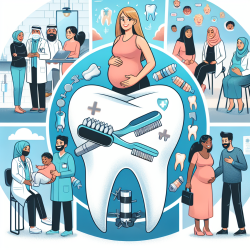Embracing Safety and Just Culture in Nursing Homes: A Path to Better Care
The COVID-19 pandemic has been a catalyst for change in many sectors, including nursing homes. A recent research article titled Integrating Principles of Safety Culture and Just Culture Into Nursing Homes: Lessons From the Pandemic highlights critical insights that can help practitioners improve their skills and create better outcomes for residents. By understanding and implementing these principles, nursing homes can foster a safer and more effective environment.
Understanding Safety and Just Culture
Safety culture in health care refers to an organization's commitment to safety at all levels, from frontline staff to leadership. It emphasizes a blame-free environment where individuals can report errors or near misses without fear of punishment. This encourages collaboration across disciplines to solve patient safety problems and improve outcomes.
Just culture complements safety culture by focusing on accountability. It identifies behaviors that could lead to adverse events and ensures appropriate responses. Just culture supports disciplinary actions for reckless behavior while avoiding punishment for errors beyond individual control.
Lessons from the Pandemic
The pandemic exposed vulnerabilities in nursing homes, prompting a reevaluation of regulatory processes. The traditional punitive approach often hindered the development of a safety culture. Instead, integrating safety and just culture principles can transform oversight from punitive to supportive, fostering continuous improvement.
- Human Error: Recognize and accept risks, redesign systems to prevent future errors.
- At-risk Behavior: Educate and coach staff, remove barriers to safe choices.
- Reckless Behavior: Sanction individuals or organizations that consciously disregard risks.
Implementing Change
To integrate these principles, nursing homes need to commit resources for education and training. Regulatory bodies should shift from punitive measures to supportive strategies that encourage transparency and improvement. This includes:
- Developing new standards and evaluation mechanisms.
- Providing technical assistance and educational resources.
- Encouraging collaboration between nursing homes and regulatory agencies.
Conclusion
The lessons learned from the pandemic offer a unique opportunity to reshape the future of nursing home care. By embracing safety and just culture principles, practitioners can create a more supportive environment that prioritizes resident safety and quality of care. For those interested in further research, the original article provides a comprehensive analysis of these concepts.
To read the original research paper, please follow this link: Integrating Principles of Safety Culture and Just Culture Into Nursing Homes: Lessons From the Pandemic.










